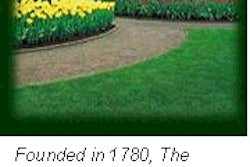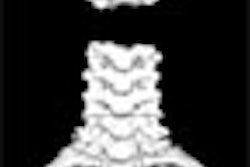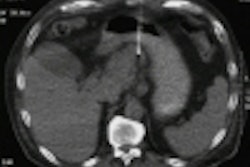For better or worse, the high cost of electron-beam CT scanners will continue to drive the development of spiral CT technology as an alternative to EBCT for coronary artery calcium scoring. But an article in this month's Radiology says spiral CT might not be up to the task.
In a study that examined 70 asymptomatic patients using both modalities, Drs. Jonothan Golden, Hyo-Chun Yoon, Lloyd Greaser and colleagues from the University of California, Los Angeles, concluded that spiral CT hasn't proved to be a feasible alternative to EBCT. Perhaps most important, the calcium scores generated by the two techniques aren't comparable.
"There are systematic differences between calcium scores obtained with single-detector array, subsecond spiral CT and those obtained with electron-beam CT," they wrote (Radiology, October 2001 Vol.221:1, pp. 213-221).
The study sought to determine differences in coronary artery calcium detection, quantification, and reproducibility, as measured by using electron-beam CT, and subsecond spiral CT with retrospective ECG gating and a commercially available software package called Smartscore (GE Medical Systems, Waukesha, WI).
The researchers obtained two sets of EBCT and spiral CT images on each of 70 consecutive subjects (43 men, mean age 47; 27 women, mean age 50) who were asymptomatic for coronary artery disease. EBCT and spiral CT were performed on each subject during a single visit.
Standard-protocol EBCT was conducted with 3-mm collimation, 3-mm table increment, 130 kVp, 630 mA, and ECG-triggered single-section mode, with 100-msec acquisitions triggered at the R-R interval, for a total of 30-40 contiguous-transverse CT images of the heart. Images were reconstructed with a 512-x-512-pixel matrix by using the sharp reconstruction algorithm, and a display field of view of 26-30 mm. A second identical sequence was performed immediately after the first sequence was completed, the authors wrote.
Spiral CT scans were obtained of the entire heart using 800-msec revolution, 120 kVp, 200-250 mA and 3-mm collimation. Formula-derived pitch was set at 1.0 x (BPM/75) during suspended maximal inspiration. An ECG trace was obtained during the sequences, and referenced to the image data with the Smartscore software. A second identical sequence was also performed using spiral CT.
Spiral CT images were reconstructed with a GE-supplied segmented reconstruction algorithm with a standard reconstruction filter and a 512 x 512 matrix. Temporal resolution was improved by reconstructing each image with a 500-msec segment of the raw scan acquisition, and the reconstructions were transferred to a workstation for analysis with Smartscore, Golden and colleagues wrote.
The effective dose was estimated at 3.0 mGy (about 1 year's normal background radiation) for EBCT, and 4.8 mGy (about 20 months' background radiation) for spiral CT.
Two experienced readers independently scored the scans, but were not blinded to the modality used because images were reconstructed on different workstations. Statistical analyses were performed with SPSS software (SPSS Inc., version 9.0, Chicago). Interobserver agreement was evaluated with the Cohen Kappa statistic, and intermodality variation was assessed by comparing the electron-beam CT score with the 130-HU and 90-HU spiral CT scores as determined by the readers. The Agatston calcium-scoring algorithm was used.
Using a 130-HU threshold for the quantification of calcium, the results showed no significant differences in interscan and interobserver variation in calcium scores between the EBCT and spiral CT images. When a 90-HU threshold was used for spiral CT images, there was greater interobserver (P<0.001) and interscan (P<0.03) variation in scores. With a 130-HU threshold, when scores were used for clinical risk stratification, there was a significant difference between the results obtained with electron-beam CT and with spiral CT (P<0.05), for both readers and both scans.
"When the lower 90-HU threshold is applied, calcium scores are consistently higher than those derived from electron-beam CT data; the opposite is true when the 130-HU threshold is applied to spiral CT data," the authors wrote. As a result, when using spiral CT at the 130-HU threshold, more subjects are given a lower cardiovascular risk assessment and more subjects have no detectable calcium.
Mathematical correction algorithms might help standardize scoring, but "a better approach might be to investigate whether a new threshold between 90 and 130 HU is preferable, or to develop reference values based on alternative scoring algorithms, such as calcium volume, that would be specific for subjects with scores derived by using the spiral CT software," they wrote. "However, given the large clinical database of scores derived from EBCT scans, a method to correlate spiral CT scores with EBCT scores would be clinically useful."
Spiral CT has not yet proved to be a feasible alternative to EBCT for calcium scoring, especially with regard to systematic differences between the scores obtained by the two modalities, the authors wrote. And scores from the two modalities should not be lumped into the same databases.
"Combining coronary artery calcium scores obtained from different CT technologies may confound attempts to develop reference values for different clinical management recommendations," the authors wrote. "Further research is warranted to determine which detector technology, imaging protocol, and scoring algorithm permit the greatest agreement between data obtained by using the two CT scanners."
By Eric BarnesAuntMinnie.com staff writer
October 12, 2001
Related Reading
Electron-beam CT detects asymptomatic CAD, July 26, 2000
Multidetector CT identifies patients at risk for heart disease, July 21, 2000
Copyright © 2001 AuntMinnie.com



















